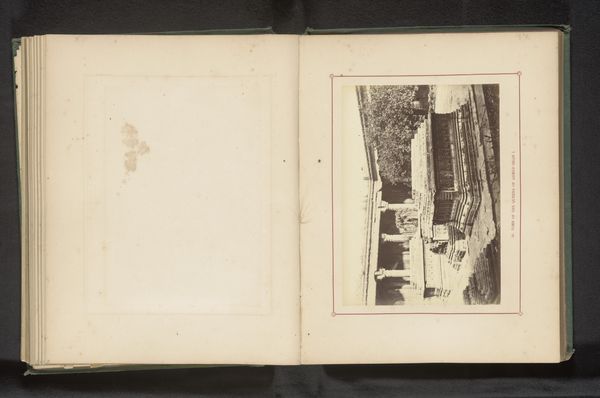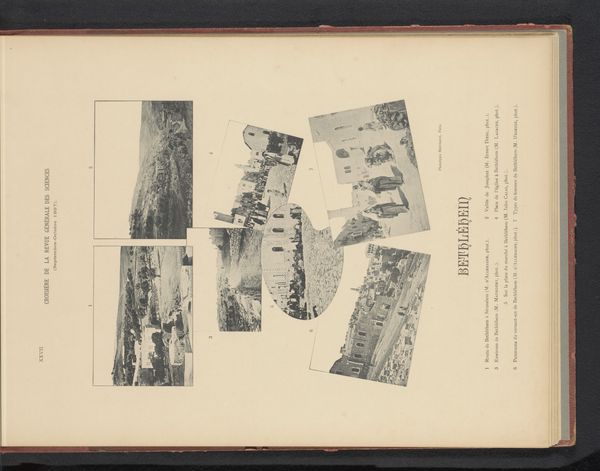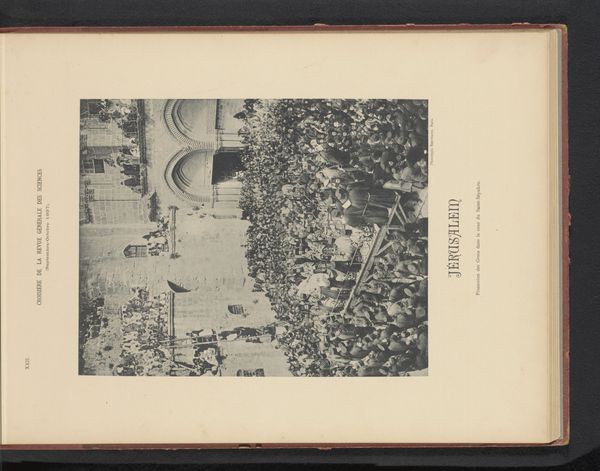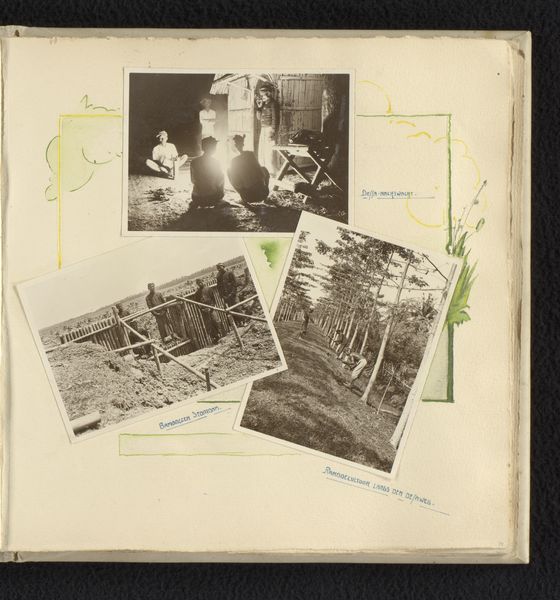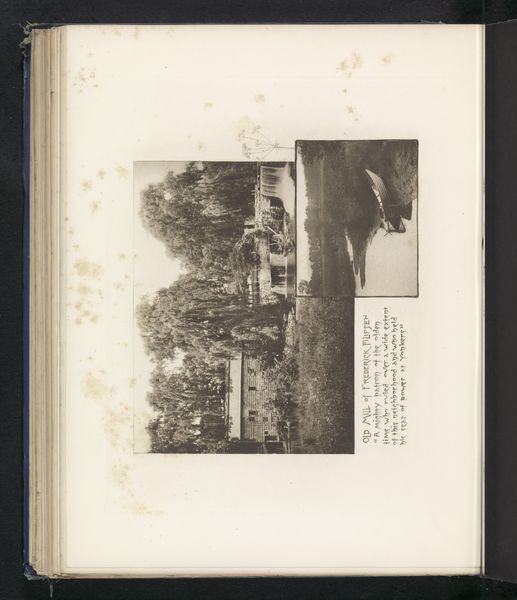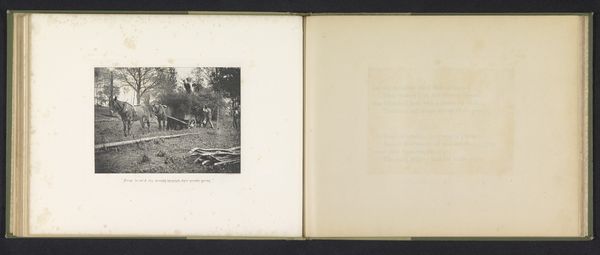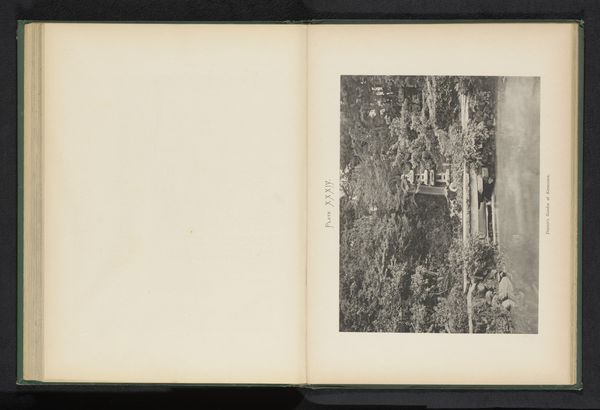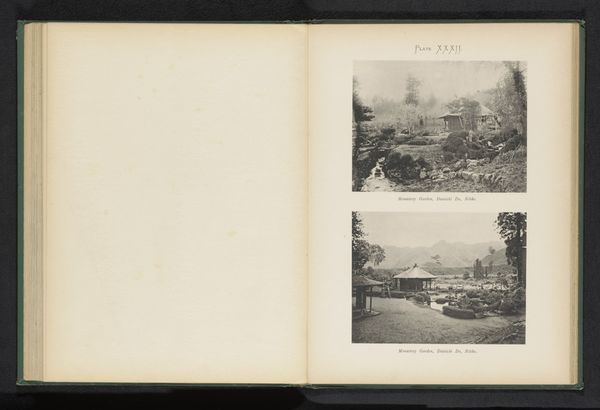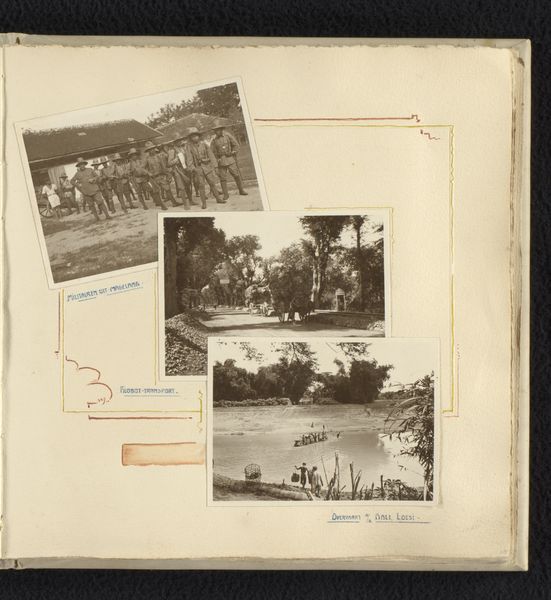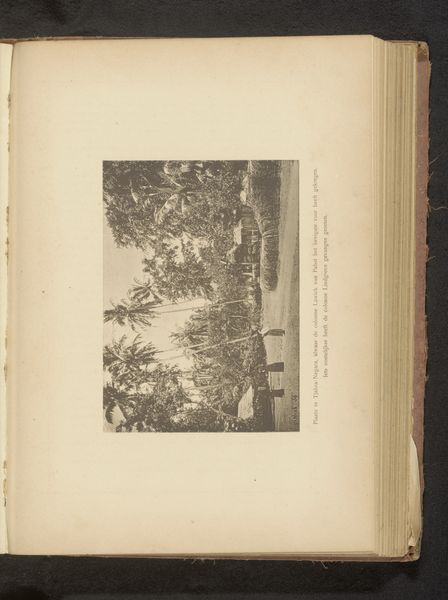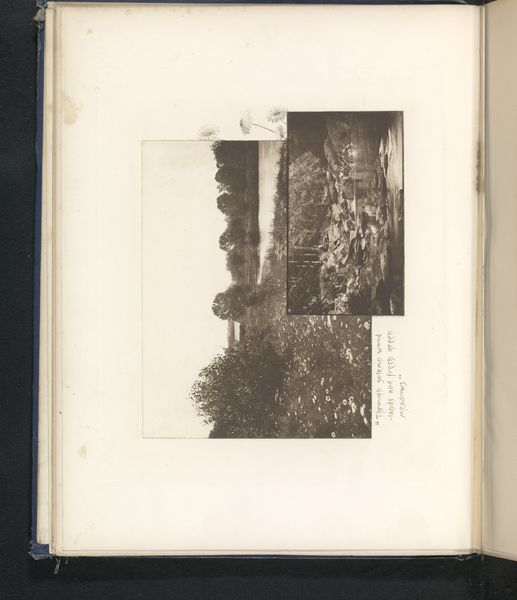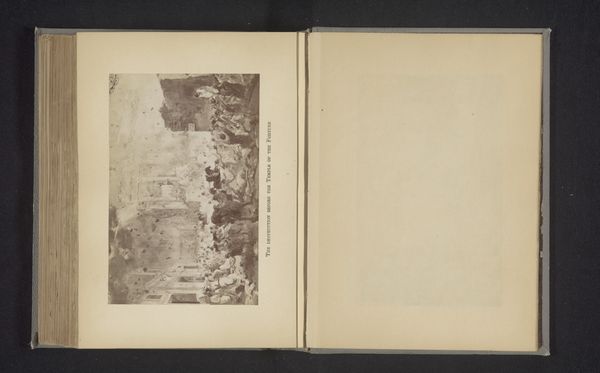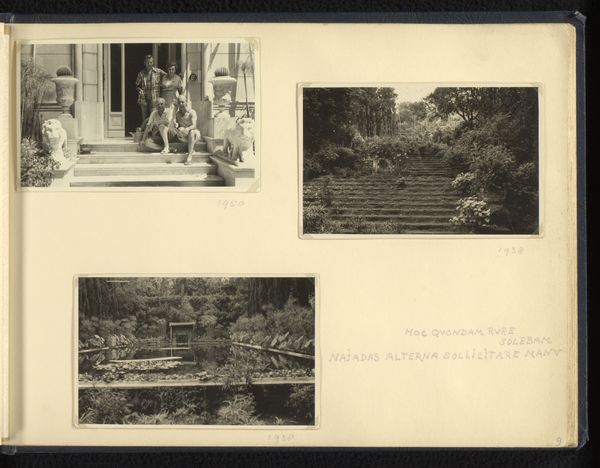
print, photography
#
african-art
# print
#
landscape
#
photography
Dimensions: height 240 mm, width 240 mm
Copyright: Rijks Museum: Open Domain
Editor: This is "Gezichten te Jati Pohon," photographs, dating from around 1910 to 1928. They are sepia toned images within an album page. There's a wistful feeling to these scenes... like looking back at a memory. What do you see here? Curator: I see a layering of visual narratives, a colonial gaze imprinted on the land and people of, I believe, Java. These photographs, mounted like specimens, evoke the visual language of exploration and documentation that supported colonial power structures. Editor: Exploration...in what way? Curator: Consider how landscape transforms into something categorized, measured. The Jati Pohon isn't just a location; it’s presented as a site of industry and, perhaps, extraction. Notice the built structures amid the natural setting and the stark geometry juxtaposed with the organic. Editor: So the juxtaposition hints at something deeper? Curator: Exactly! These images aren't just pretty postcards. They echo themes of control, ownership, and the imposition of a foreign order. What feelings do these contrasting elements evoke in you? Editor: Now that you point it out, the way the photos are arranged, it feels like a curated experience... not just snapshots, but a deliberate story being told. Curator: Yes, a constructed reality that uses visual symbols to normalize a certain perspective. And photography itself, remember, became a crucial tool for shaping perception and justifying colonial ambitions. It prompts a critical dialogue on the image’s impact. Editor: It definitely shifts how I initially saw the images. I am so intrigued by its different levels of visual dialogue. Curator: Precisely. Art invites questioning and dialogue between past actions and present memories.
Comments
No comments
Be the first to comment and join the conversation on the ultimate creative platform.
